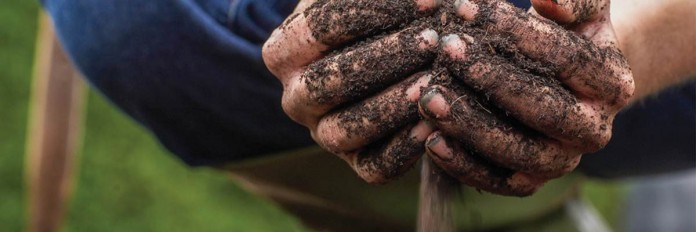WASHINGTON — Agriculture Secretary Tom Vilsack unveiled the USDA Urban Agriculture Toolkit, a new resource created by USDA’s Know Your Farmer team to help entrepreneurs and community leaders successfully create jobs and increase access to healthy food through urban agriculture. From neighborhood gardens grown on repurposed lots, to innovative mobile markets and intensive hydroponic and aquaculture operations, urban food production is rapidly growing into a mature business sector in cities across the country.
“Urban agriculture helps strengthen the health and social fabric of communities while creating economic opportunities for farmers and neighborhoods,” Vilsack said. “USDA’s Urban Agriculture Toolkit compiles guidance from our Know Your Farmer team and many private partners into one comprehensive resource to help small-scale producers manage all aspects of their business. From protecting soil health to marketing to schools and grocery store chains, USDA has tools to meet the needs of this new breed of innovative urban farmer and small business owner.”
Local food sales increasing
Industry estimates show U.S. local food sales totaled at least $12 billion in 2014, up from $5 billion in 2008, and experts anticipate that value to hit $20 billion by 2019. The numbers also show that these opportunities are helping to drive job growth in agriculture, increase entrepreneurship and expand food access and choice.
Toolkit
USDA’s Toolkit is an electronic document that helps urban and small farms navigate more than 70 helpful resources, including technical assistance and financing opportunities. It focuses on some of the most pressing challenges confronting urban producers such as land access, soil quality, water resources, capital and financing, infrastructure, market development, production strategies, and applying for federal, state or private foundation grants. University extension service partners in Chicago and Indianapolis helped develop cost estimates for starting urban farms and the toolkit includes information on best practices and checklists for start-ups and early-stage producers planning outdoor or indoor operations.
Some of the USDA resources featured in the Toolkit include:
- Natural Resources Conservation Service technical and financial assistance for drip irrigation and seasonal high tunnels to extend the growing season.
- Farm Services Agency microloans that provide up to $50,000 in financing for equipment, working capital or other expenses.
- Food and Nutrition Service assistance to help urban farmers become authorized to accept SNAP, WIC and Senior Farmers Market Nutrition Program benefit cards.
- Agricultural Marketing Service Farmers Market Promotion Program grants that support direct-to-consumer marketing activities in cities, and Local Food Promotion Program grants that support food hubs, farm-to-retail, and related projects.
- National Institute of Food and Agriculture’s Sustainable Agriculture Research and Education (SARE) program support for field trials in urban settings and urban farm planning and marketing guides.
Vilsack made the announcement today during an event opening a new school community garden at Frederick Douglass High School in Baltimore. The idea for the Toolkit was originally conceived at a USDA Urban Agriculture roundtable held nearby in Baltimore last spring. A key result of that meeting was the creation of USDA’s Urban Agriculture Working Group (UAWG) that has assembled an inventory of existing department resources and worked to make them more readily accessible. The UAWG continues to actively engage urban producers around the country to identify evolving needs and support their success as a positive socioeconomic force in their communities.
Several Baltimore organizations in the vanguard of urban agriculture have developed resources that are included in the Toolkit as models for other communities like the City Farm Alliance’s Urban Agriculture How-To Guide, the Community Law Center’s Urban Agriculture Law Project Manual and the Green Pattern Book that helps local leaders map and identify productive new uses for vacant land.
During the event, Vilsack also highlighted expansion of a partnership between USDA and the Corporation for National and Community Service, the federal agency that administers AmeriCorps, increasing the number of opportunities for young people in Baltimore to serve as AmeriCorps VISTA Summer Associates, earning valuable professional and life experience while serving their community. These AmeriCorps members will serve with the Maryland Out of School Time (MOST) Network to provide summer opportunities for Baltimore City residents. They will join the more than 1,400 AmeriCorps members currently serving institutions and organizations throughout the city, including Frederick Douglass High School.
Know Your Farmer, Know Your Food
The Urban Agriculture Toolkit and the UAWG are part of USDA’s Know Your Farmer, Know Your Food Initiative (KYF2) supporting the Obama Administration’s work to strengthen economic bonds between rural and urban areas. Launched in 2009, KYF2 breaks down silos and takes stock of USDA programs that support the growing demand for local and regional food systems. Visit the KYF2 website at www.usda.gov/knowyourfarmer to find local and regional food system resources in your community. Learn more about the $1 billion USDA has invested in 40,000 projects to develop local market opportunities at https://medium.com/usda-results as USDA celebrates Know your Farmer Month in April.










